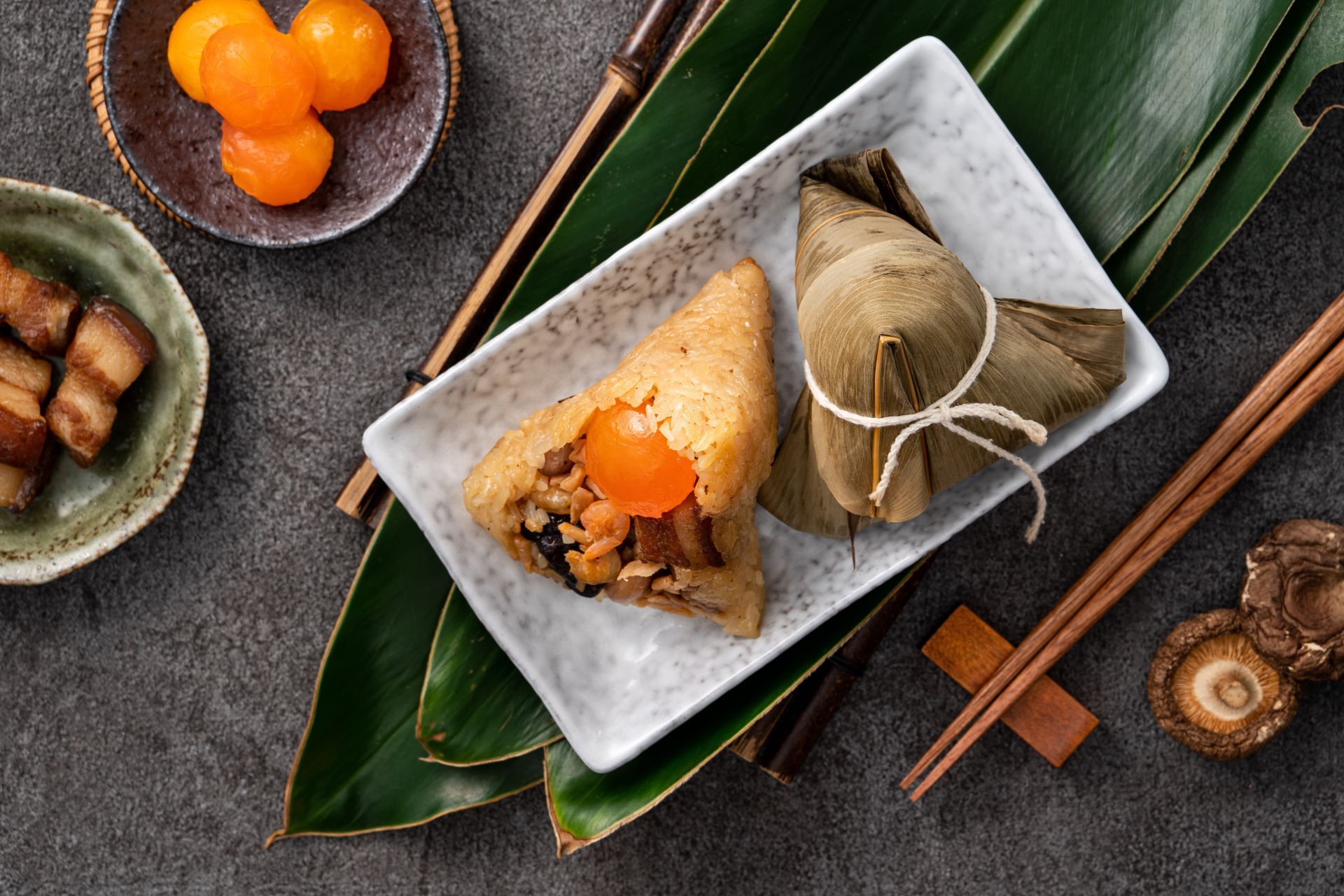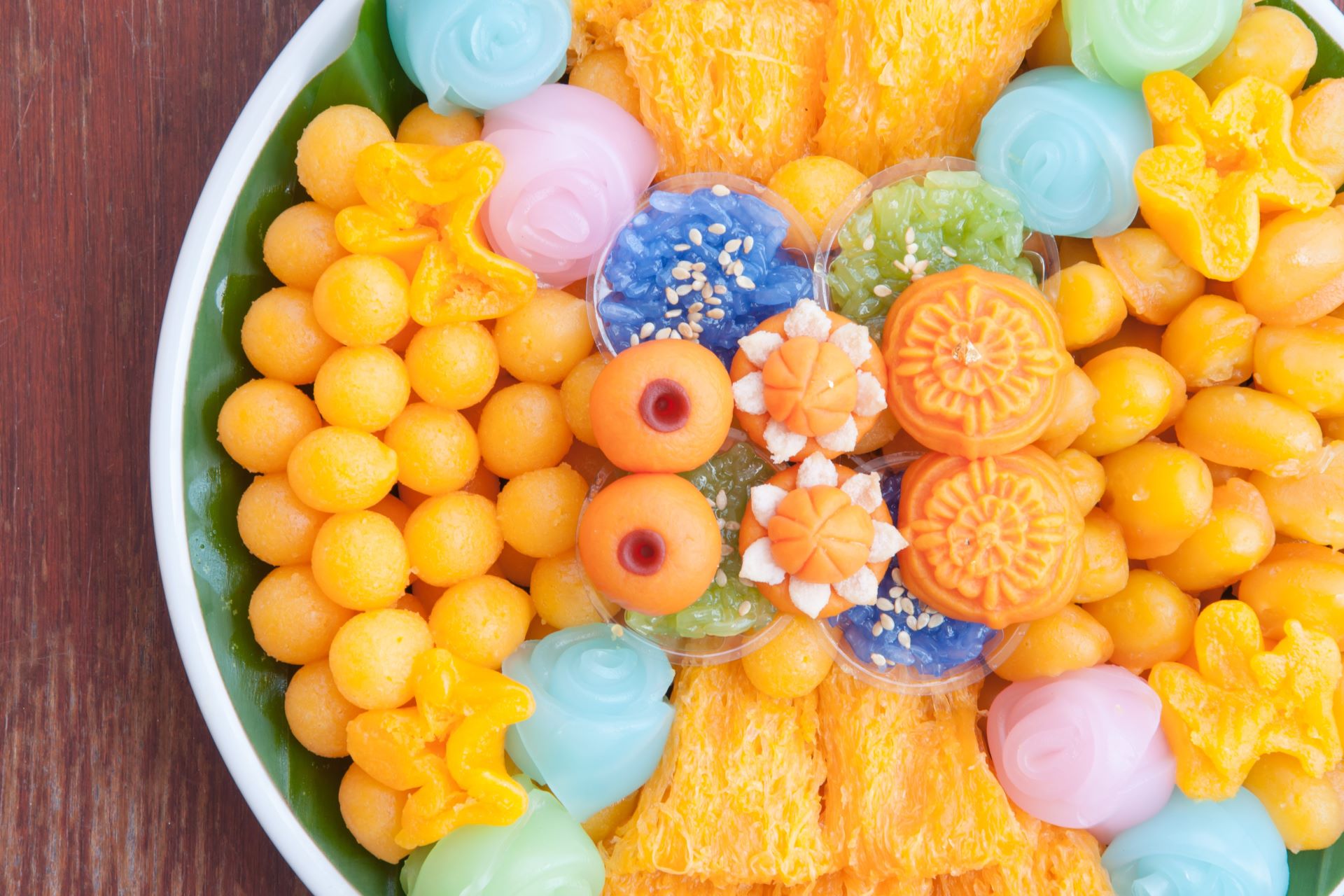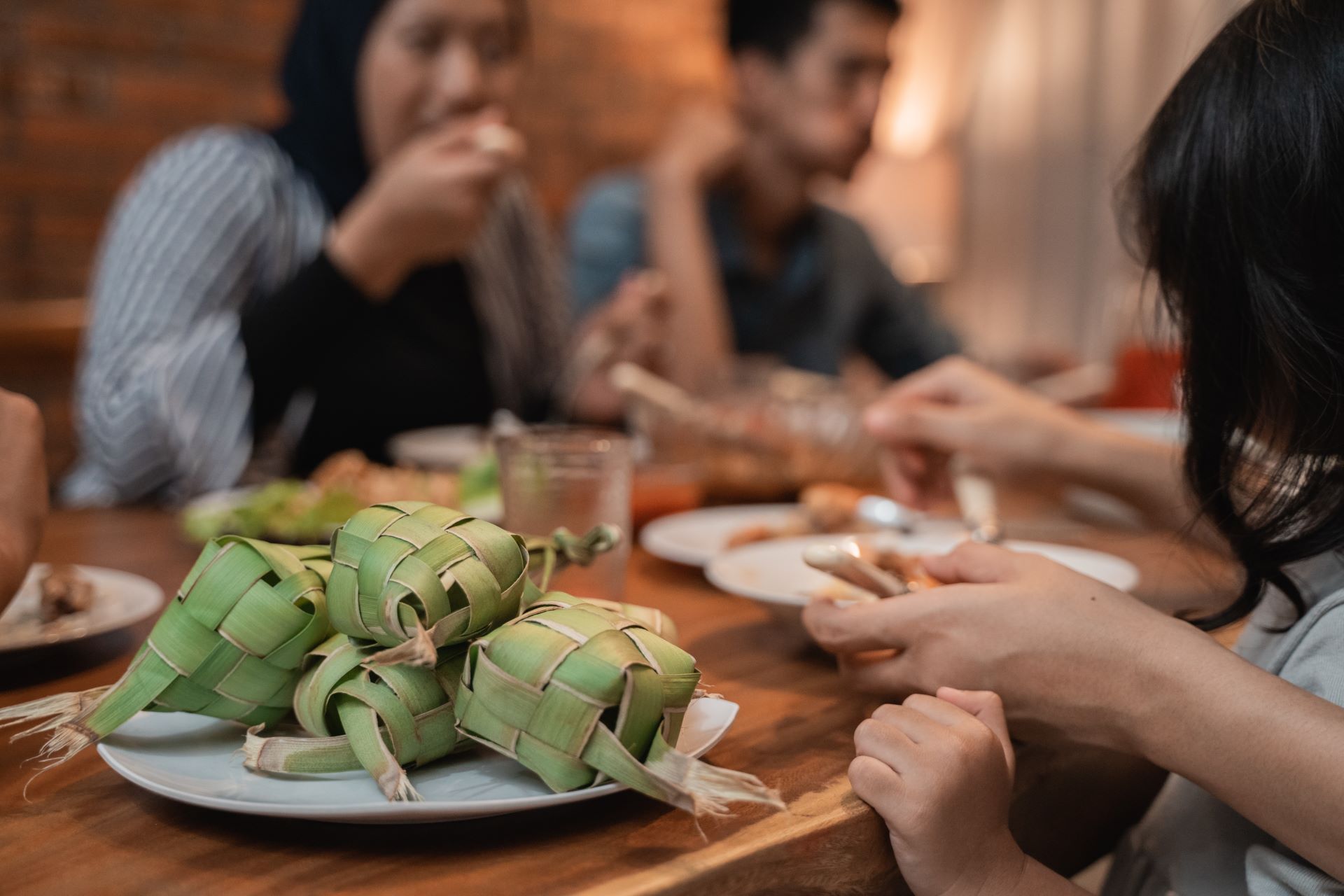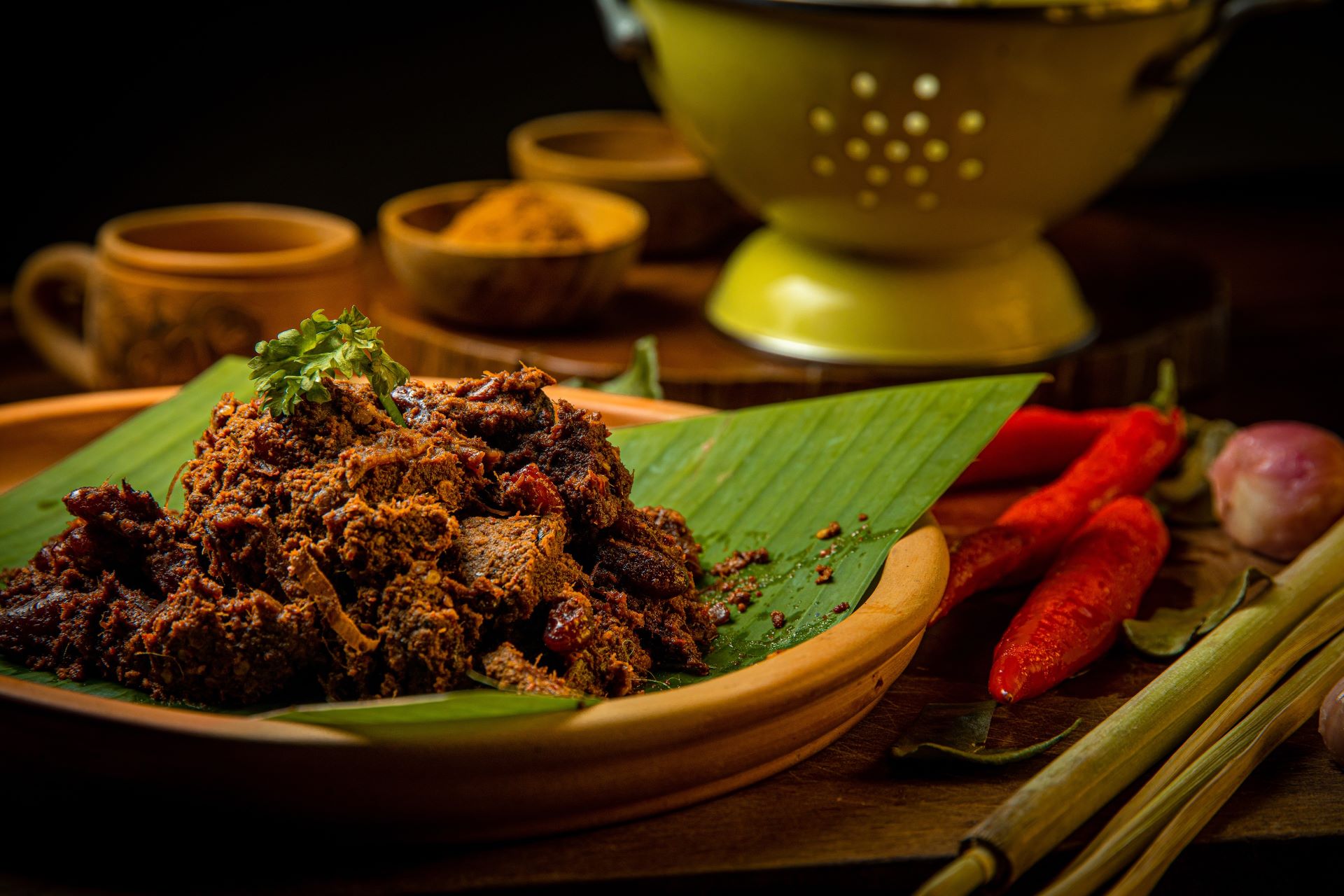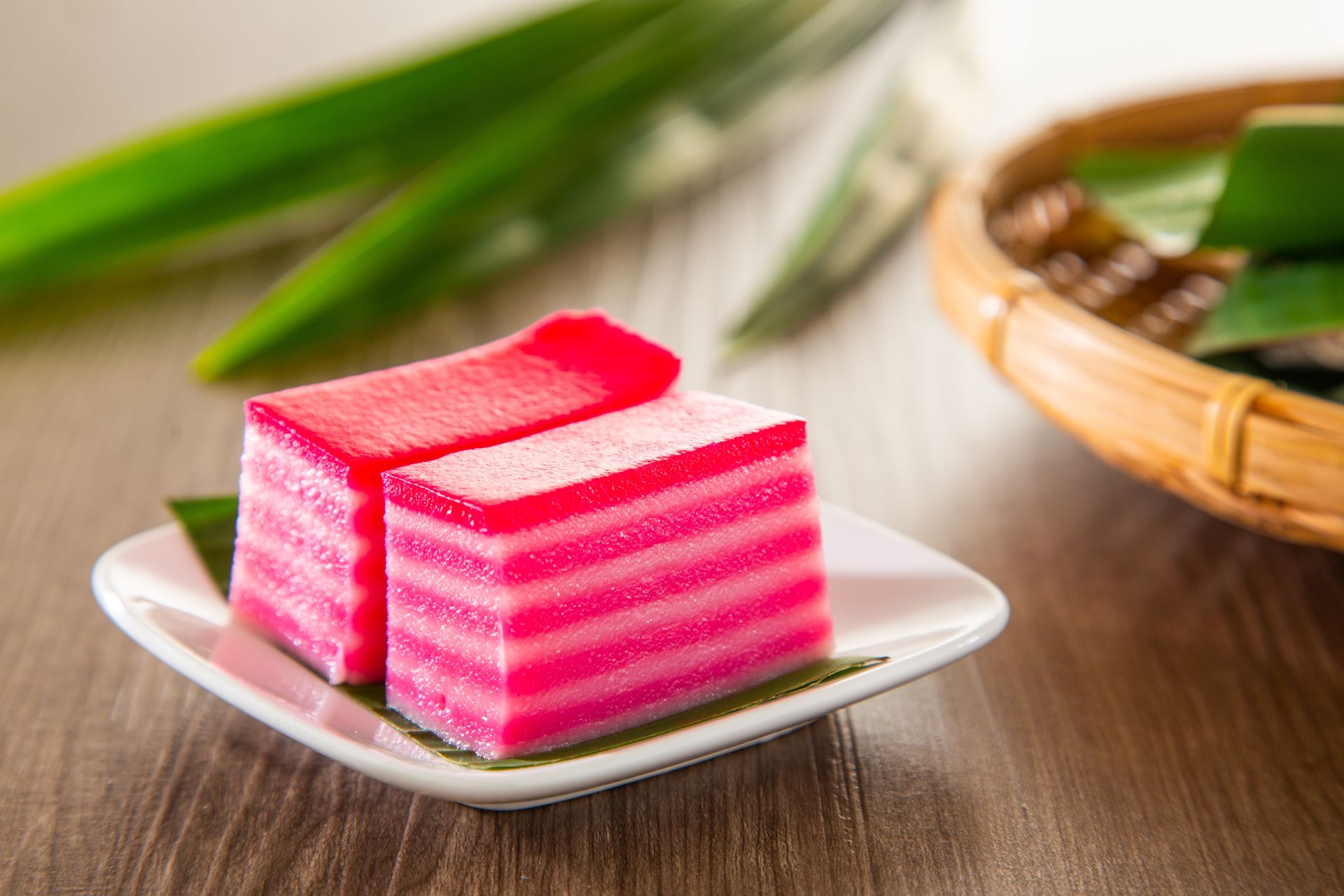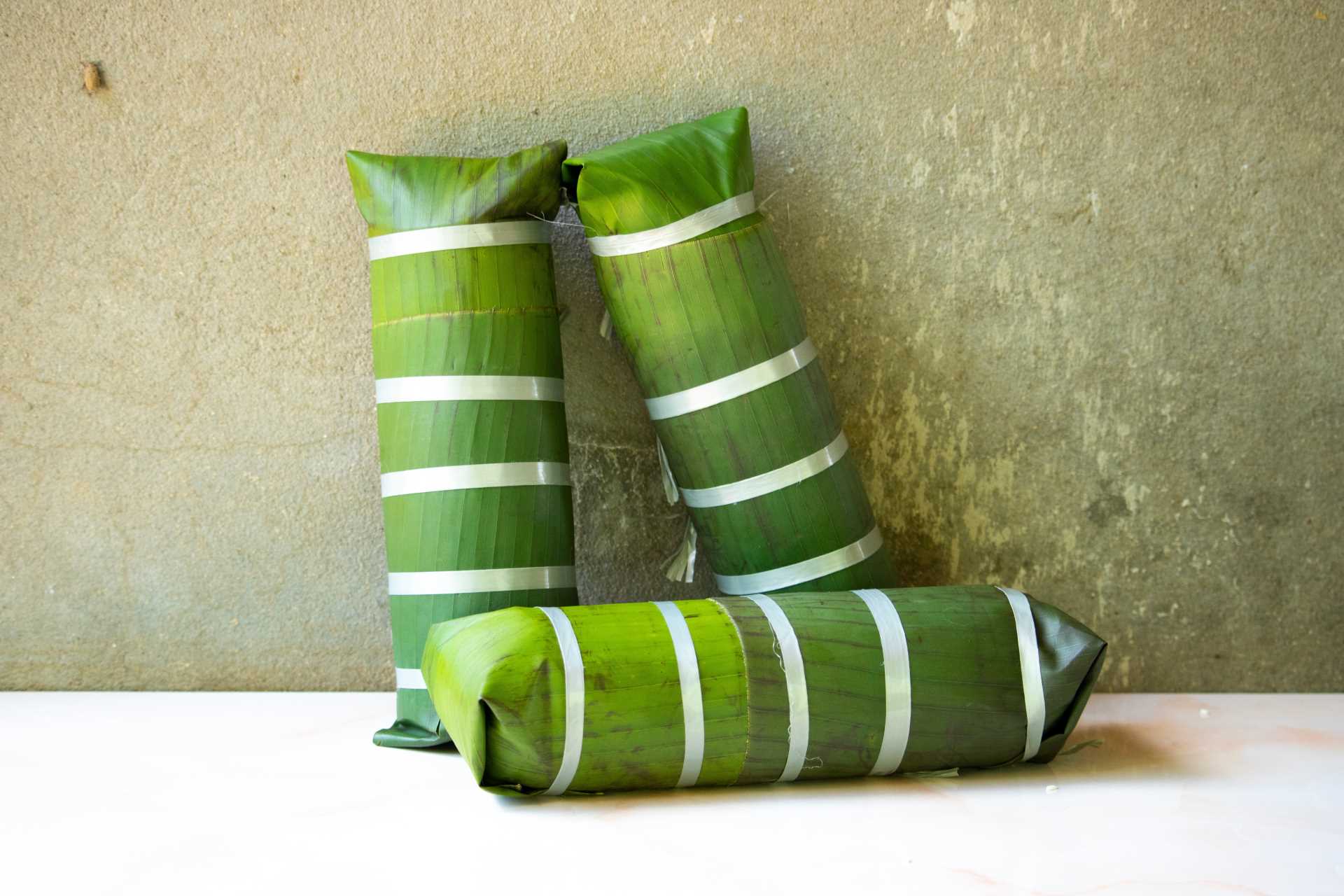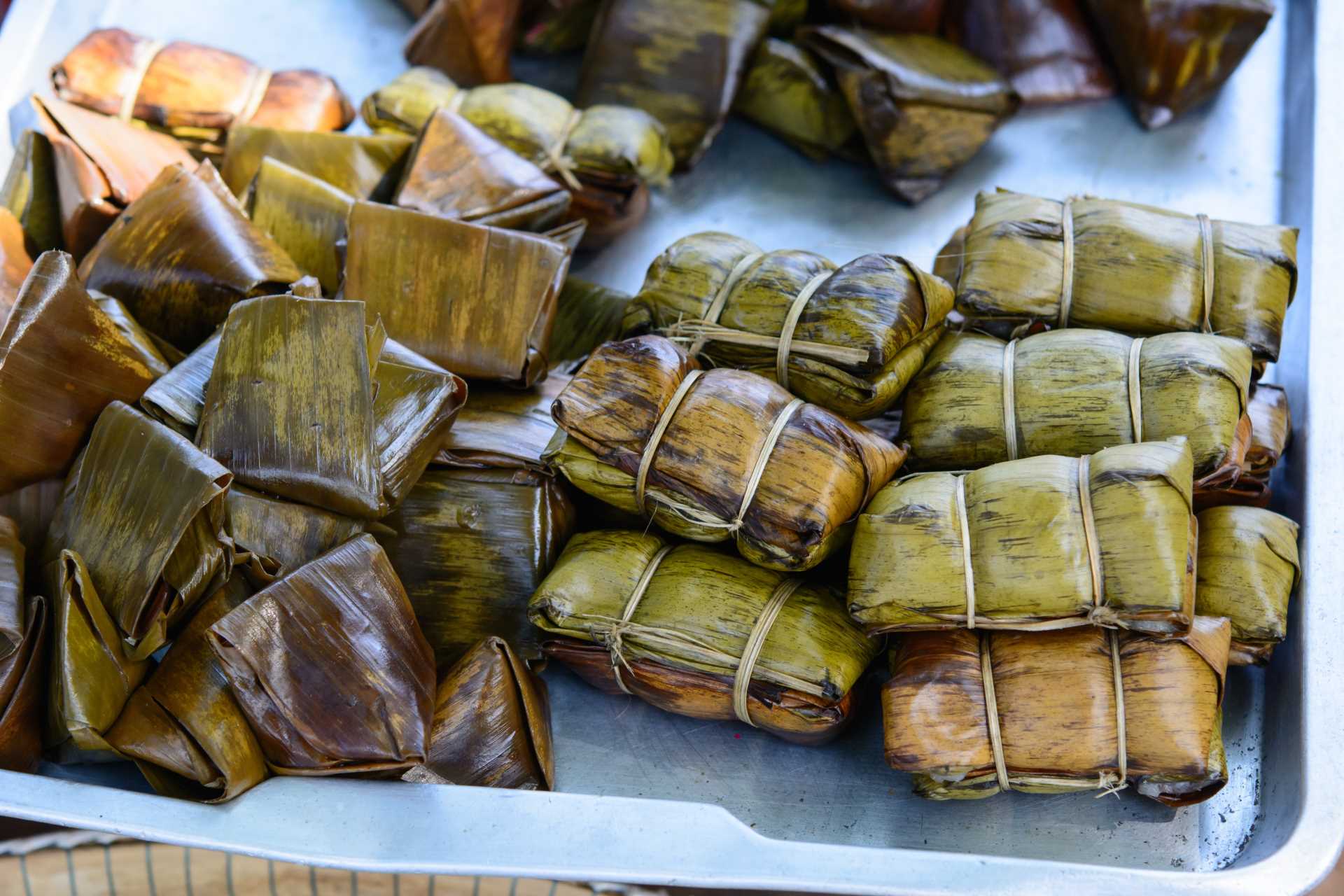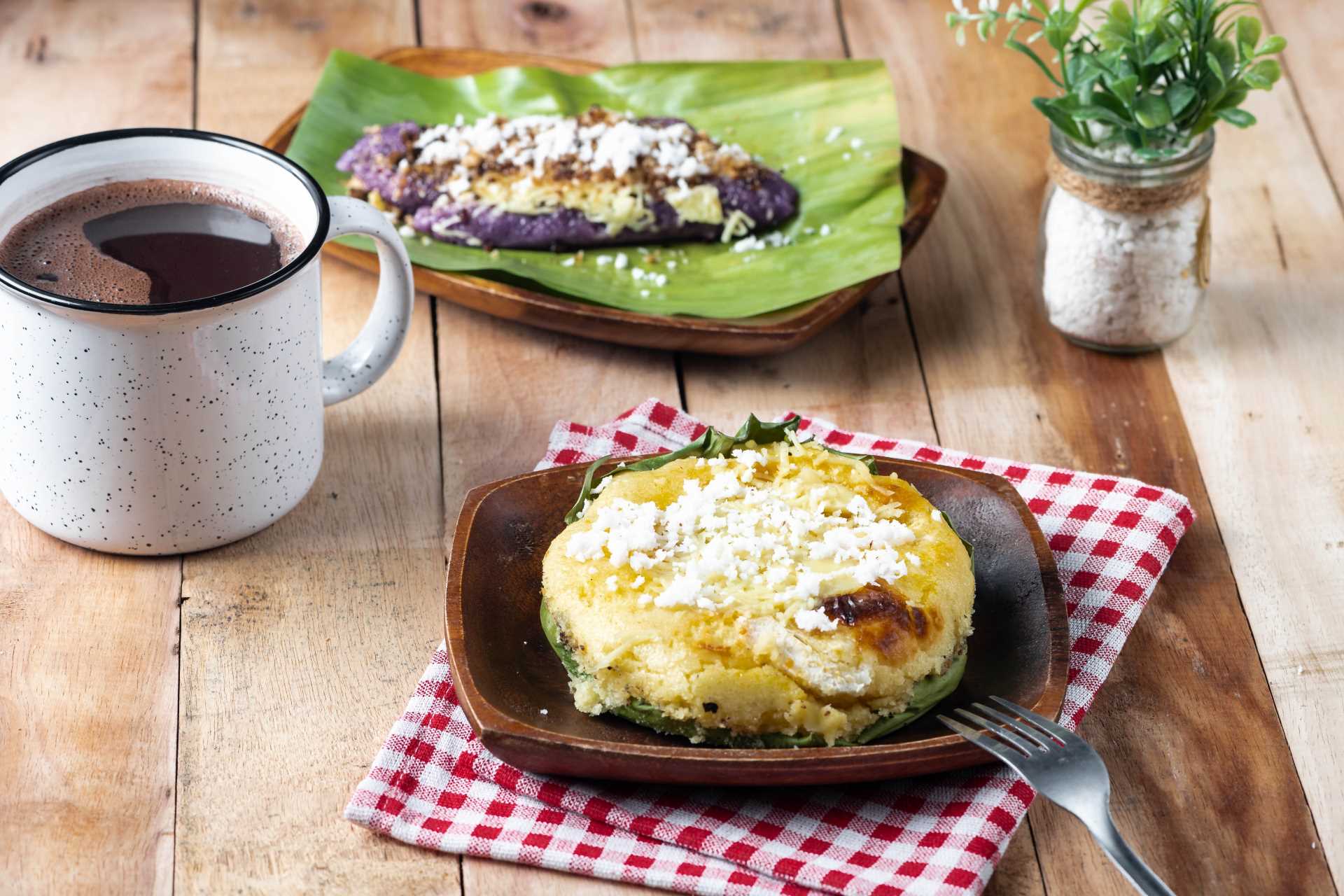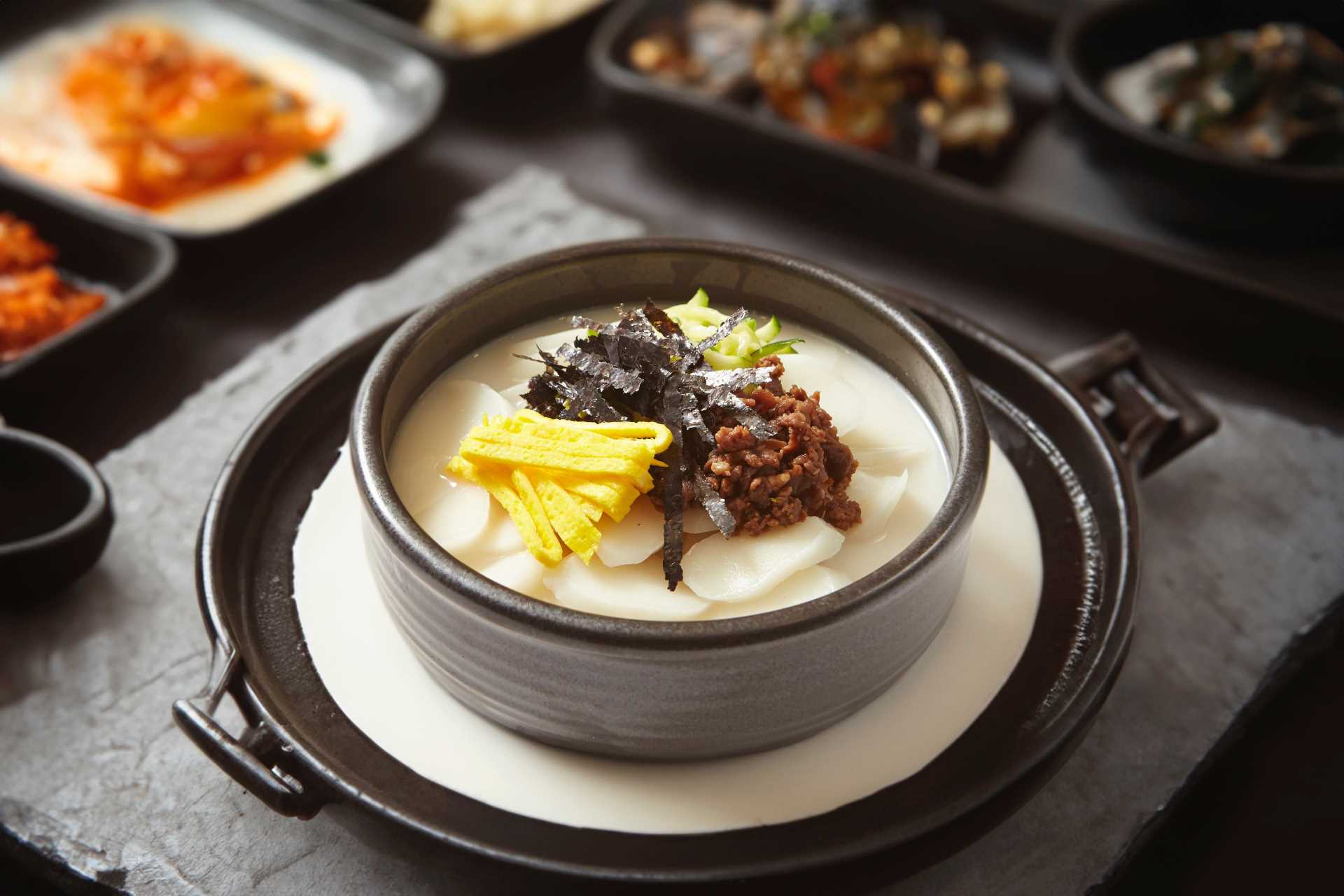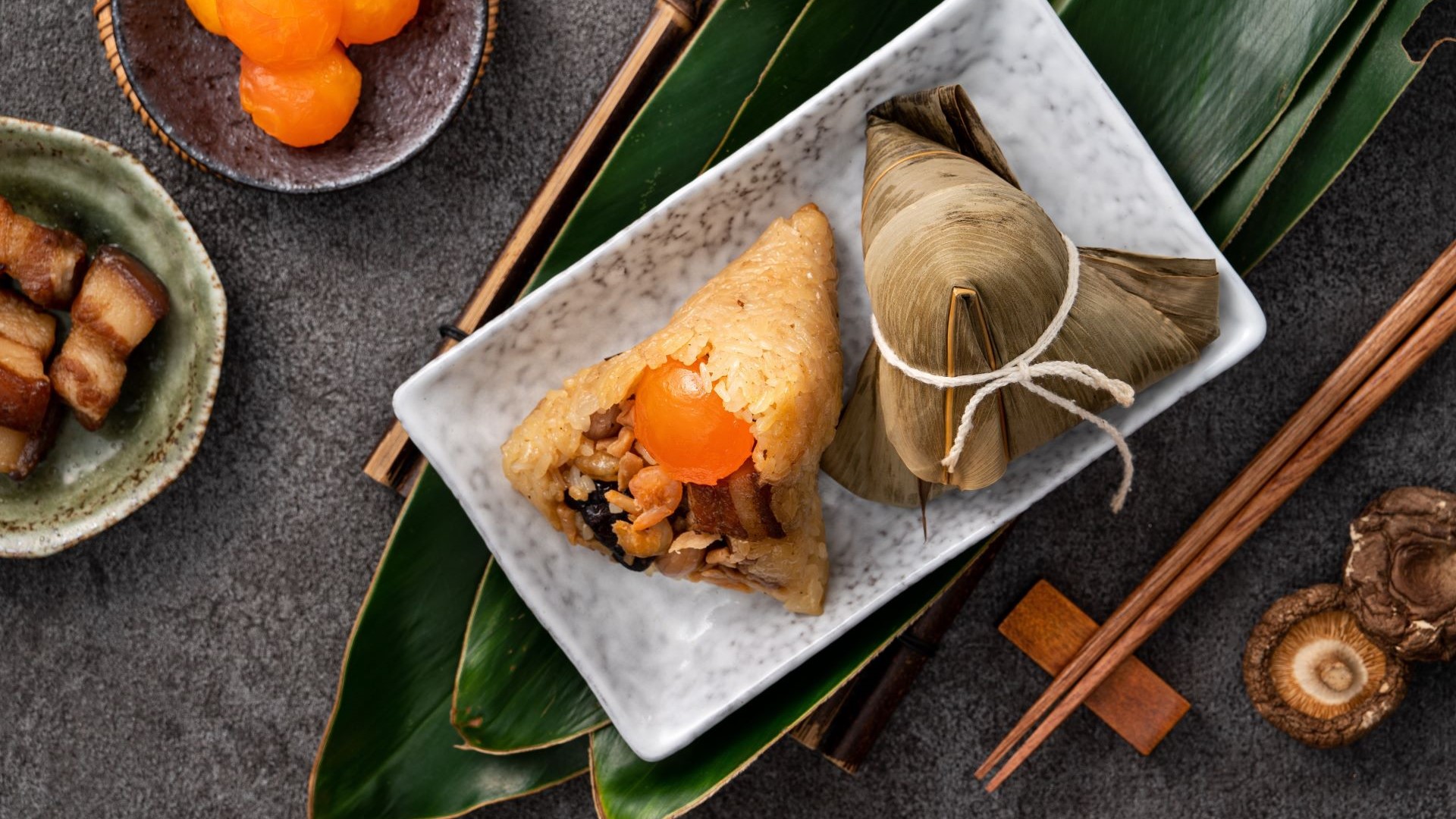
A Culinary Journey Through Festive Traditions
Asia is a continent with a rich tapestry of diverse cultures, including beliefs, traditions, and food, which plays a fascinating role in this mosaic. Many Asian cuisines, like Chinese, Japanese, Thai, and Vietnamese, have gained global fame. Their deep connection to traditional beliefs and stories makes them even more intriguing.
With the Dragon Boat Festival approaching in Taiwan, let's explore some special foods enjoyed during significant occasions across Asia:
Taiwan: Zongzi
The Dragon Boat Festival in Taiwan wouldn't be complete without zongzi. These pyramid-shaped glutinous rice dumplings, filled with savory or sweet ingredients like pork and red bean paste, are wrapped in bamboo leaves and then steamed. Zongzi symbolizes the festival's spirit, and people eat it to ward off evil spirits and honor Qu Yuan's sacrifice.
Image via Romix Image / Shutterstock.
Thailand: Nine Auspicious Thai Desserts
In Thailand, nine auspicious desserts are integral to traditional ceremonies like weddings and housewarmings. Symbolizing prosperity, these desserts often include "Thong," which means gold in Thai and represents wealth. Examples include Thong Yip, Thong Yot, and Foi Thong.
Image via Xiebiyun / Shutterstock.
Malaysia: Ketupat
Ketupat is a traditional Malay dish that features glutinous rice wrapped in palm leaves and boiled. It's commonly served during festivals like Eid al-Fitr and Hari Raya Aidiladha.
Image via Odua Images / Shutterstock.
Indonesia: Rendang
Rendang is a rich meat dish cooked with coconut milk and a mix of spices. It's a staple during festive occasions like Eid al-Fitr and weddings.
Image via w1snu.com / Shutterstock.
Singapore: Kueh Lapis
Kueh Lapis is a multi-layered steamed cake symbolizing rising fortune and prosperity. It's often enjoyed during Chinese New Year celebrations.
Image via Bored Photography / Shutterstock.
Vietnam: Bánh Chưng
Bánh Chưng, a square-shaped glutinous rice cake, symbolizes earth and ancestor worship during Tết Nguyên Đán, the Vietnamese Lunar New Year.
Image via Light Stock / Shutterstock.
Cambodia: Num Ansom
Num Ansom are sticky rice cakes filled with bananas or mung beans, wrapped in banana leaves and steamed, often prepared during Pchum Ben.
Image via AngkorVector / Shutterstock.
Laos: Khao Tom
Khao Tom are sticky rice dumplings filled with ingredients like pork, peanuts, or coconut, commonly served during Boun Khao Padap Din.
Image via Dusit Wongwattanakul / Shutterstock.
Philippines: Bibingka
Bibingka, a rice cake baked in a clay pot lined with banana leaves, is a Christmas season favorite, especially during Simbang Gabi gatherings.
Image via Loybuckz / Shutterstock.
South Korea: Tteokguk
Tteokguk, a traditional soup made with sliced rice cakes, is served during Seollal, the Korean Lunar New Year, symbolizing aging a year.
Image via mnimage / Shutterstock.
These dishes not only tantalize the taste buds but also provide insight into the diverse cultural tapestry of Asia.

